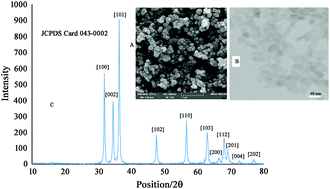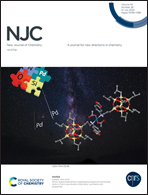Ultrasensitive electroanalytical sulfisoxazole sensors amplified with Pd-doped ZnO nanoparticles and modified with 1-hexyl-3-methyl imidazolium bis(trifluoromethylsulfonyl)imide
Abstract
In this study, an electrochemical sensor has been introduced by incorporating Pd-doped ZnO nanoparticles (ZnO–Pd/NPs) into a carbon paste (CP) matrix amplified by a conductive binder (1-hexyl-3-methylimidazolium bis(trifluoromethylsulfonyl)imide (1H3MIBTMSI), in this case) to determine the concentration of the sulfisoxazole (SFX) drug in urine, tablet, and pharmaceutical wastewater samples. ZnO–Pd/NPs were successfully synthesized via a one-pot procedure based on the precipitation strategy, and characterized via FE-SEM, TEM, EDAX, MAP, and XRD methods. Using ZnO–Pd/NP/1H3MIBTMSI/CPE as the working electrode, a dramatic increase in the oxidation current of SFX was observed, and the sensor was used for determining SFX within the concentration range of 0.009 μM to 430 μM (R2 = 0.9981). Due to the high conductivity of ZnO–Pd/NP/1H3MIBTMSI/CPE, the sensor showed a limit of detection of 5.0 nM and was introduced as the first analytical sensor for determining SFX at the nanomolar level. The real sample analysis results showed a recovery range of 98.8–104.15% for the determination of SFX, which confirms the potential of ZnO–Pd/NP/1H3MIBTMSI/CPE for the determination of SFX in urine and pharmaceutical samples.



 Please wait while we load your content...
Please wait while we load your content...